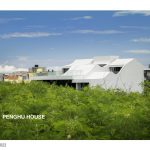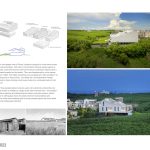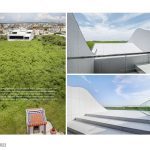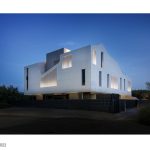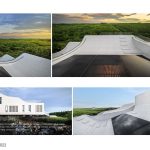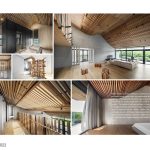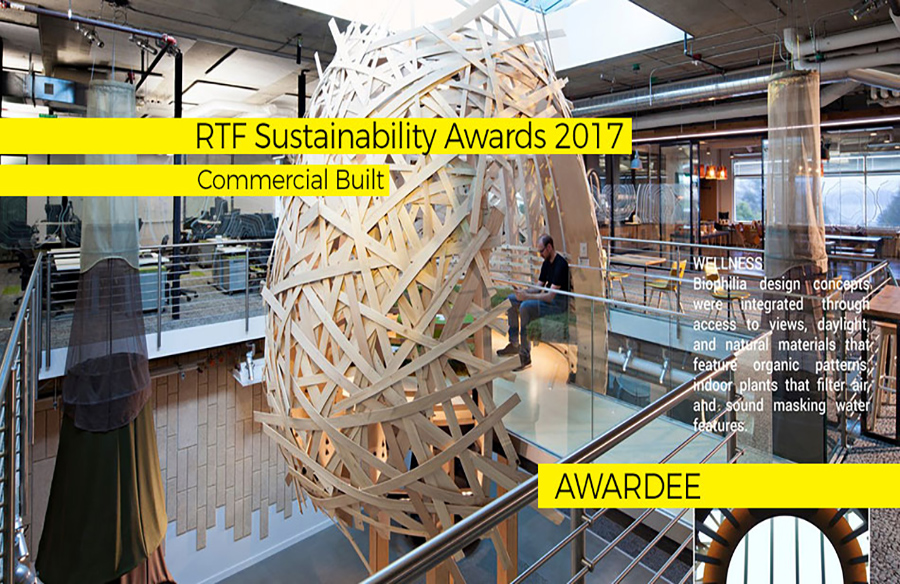On the Penghu archipelago west of Taiwan, indigenous laogushi or coral stone houses are a unique cultural heritage. With roots in the southern Chinese coastal regions of the Qing dynasty, coral stone houses were built of actual coral blocks stacked upon a base wall of basalt quarried on the islands. They are characterized by a nine-square plan, distinctive “rolled” roof ridges resembling a curved gable and “slits and pillars” as window openings due to strong winds. Our design for a multi generation Penghu family is inspired by these historical coral house clusters on windswept plains of wild chrysanthemum.
Rethinking The Future Awards 2022
First Award | Private Residence (Small-Medium) (Built)

| Project Details | |
| Project Name: | PENGHU HOUSE |
| Studio Name: | XRANGE Architects |
| Design Team: | Grace Cheung、Royce Hong、Emily Lin、Julie Lin、Peihsuan Hsu、Urdaneta Zeberio、Sonia Pan、Miriam Park、Beatrice Cordella、Macarena Azqueta 、Chingting Su、 Ivan Chen |
| Area: | 645 m2 |
| Year: | 2015-2019 |
| Location: | Penghu County, Taiwan |
| Consultants: | (Structural Engineers) Top Technic Engineering Consultants Co., Ltd. |
| (Lighting Design) Unolai Lighting Design & Associates | |
| Photography Credits: | Kuo-Min Lee |
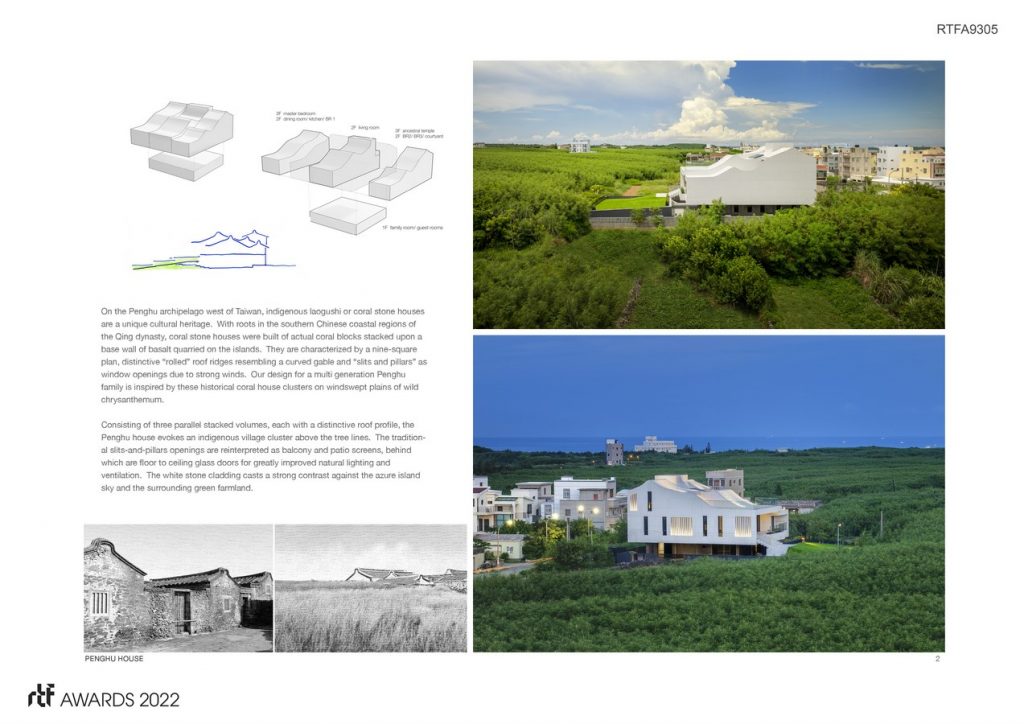
©Kuo-Min Lee
Consisting of three parallel stacked volumes, each with a distinctive roof profile, the Penghu house evokes an indigenous village cluster above the tree lines. The traditional slits-and-pillars openings are reinterpreted as balcony and patio screens, behind which are floor to ceiling glass doors for greatly improved natural lighting and ventilation. The white stone cladding casts a strong contrast against the azure island sky and the surrounding green farmland.
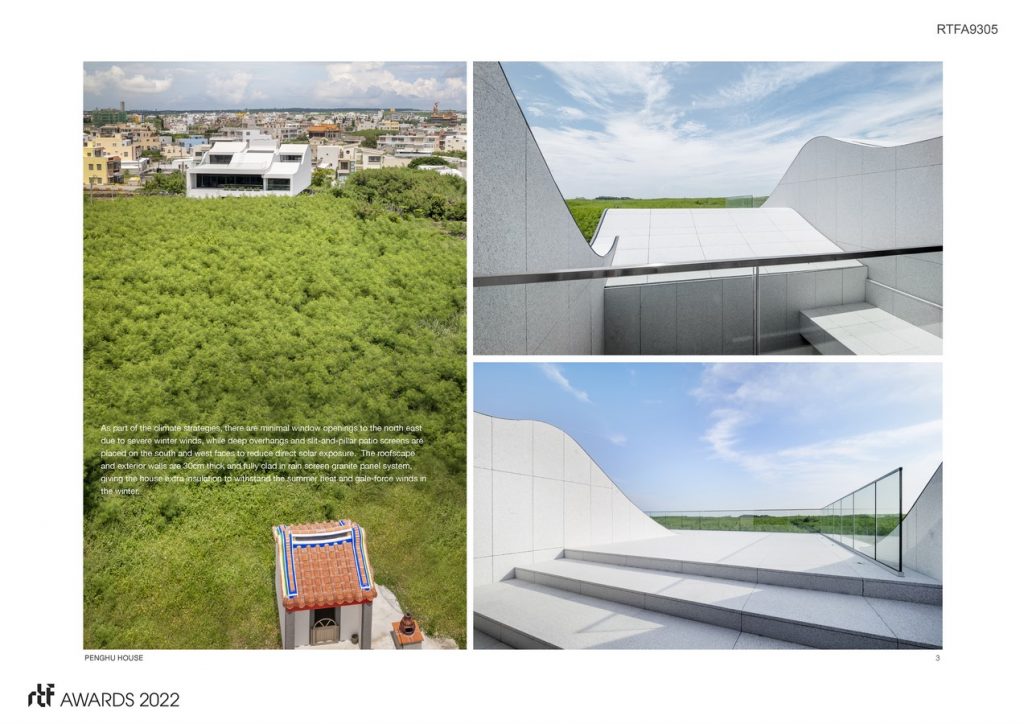
©Kuo-Min Lee
The three living volumes form the parti of the house as well as the structural system of load bearing walls. The central block houses the 5m tall living room or grand hall for family gatherings and festivals. The east volume next to it is a courtyard that connects the parents’ bedrooms and the ancestral temple upstairs. The kitchen and dining is in the west volume and on the top floor, the master bedroom opens onto the roofscape of rolled ridges with sweeping views of the sea. On this level, the 3 roof silhouettes interconnect; the roof deck, pitch and ridges flow to create a rolling, continuous spatial experience.
As part of the climate strategies, there are minimal window openings to the north east due to severe winter winds, while deep overhangs and slit-and-pillar patio screens are placed on the south and west faces to reduce direct solar exposure. The roofscape and exterior walls are 30cm thick and fully clad in rain screen granite panel system, giving the house extra insulation to withstand the summer heat and gale-force winds in the winter. Within the compound is a natural wellspring and a small organic farming patch for the family.
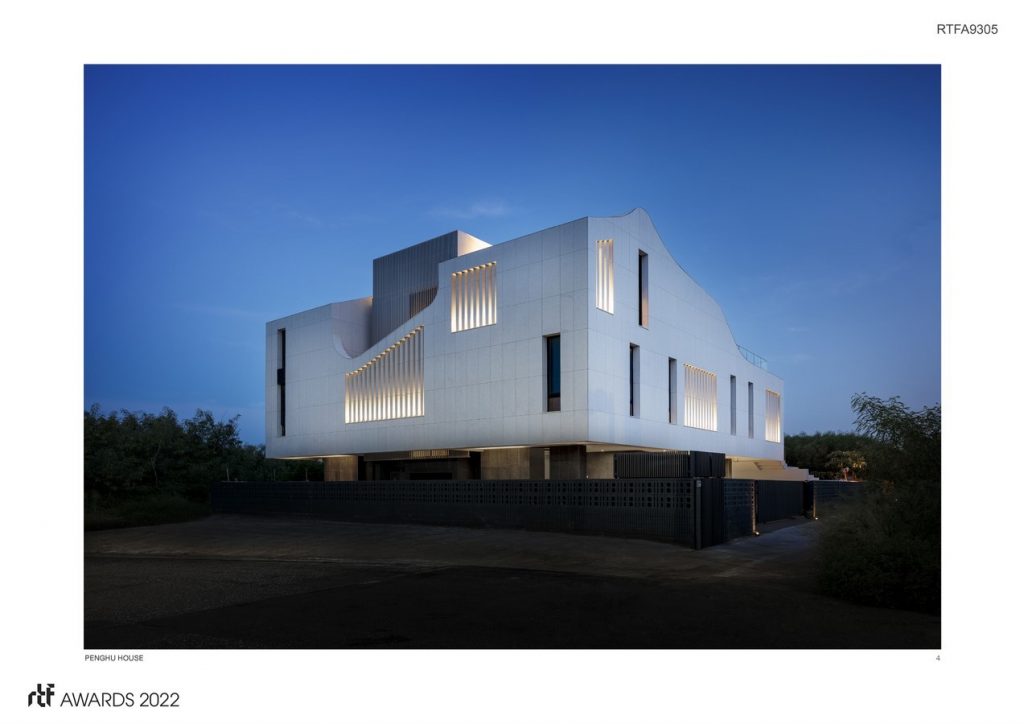
©Kuo-Min Lee
Effective natural cross ventilation is built-in throughout the entire house, even within the mechanical and duct conduits. This allows the house to enjoy natural breezes without the use of air conditioners even when it is 35˚C outside. The bedroom walls are rendered in natural clay to regulate humidity and prevent mold or fungal growth which is common on the island. Within, the rolling roofscape is lined with fragrant pine, giving the house a warm visual and olfactory signature. Wood cut-offs are also recycled into original furniture and screen for the house.
The Penghu House integrates traditional wisdom within a modern framework to create a multi-generational home for a local clan, resulting in a distinctive architecture born from the unique conditions of Penghu.
- ©Kuo-Min Lee
- ©Kuo-Min Lee
- ©Kuo-Min Lee
